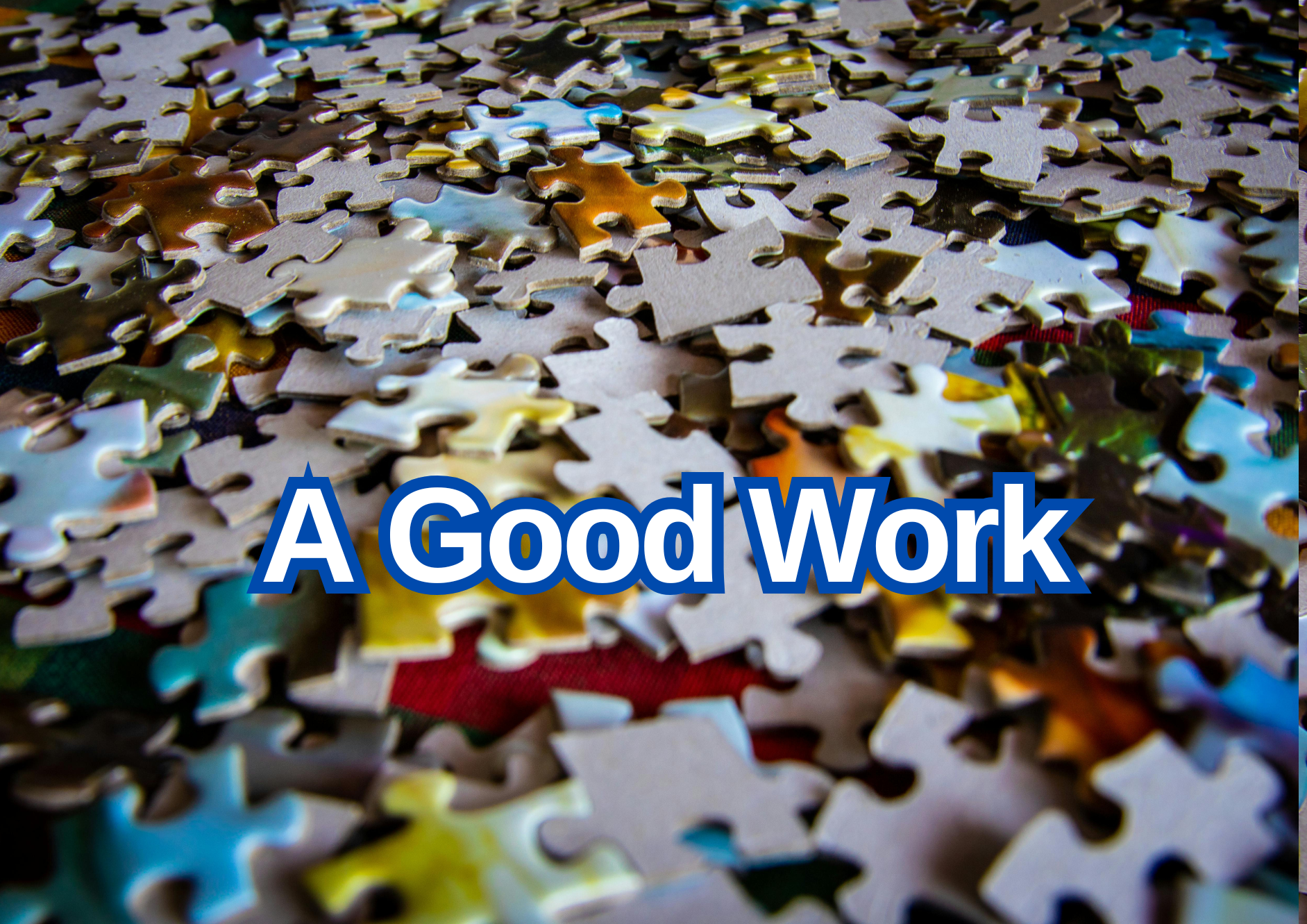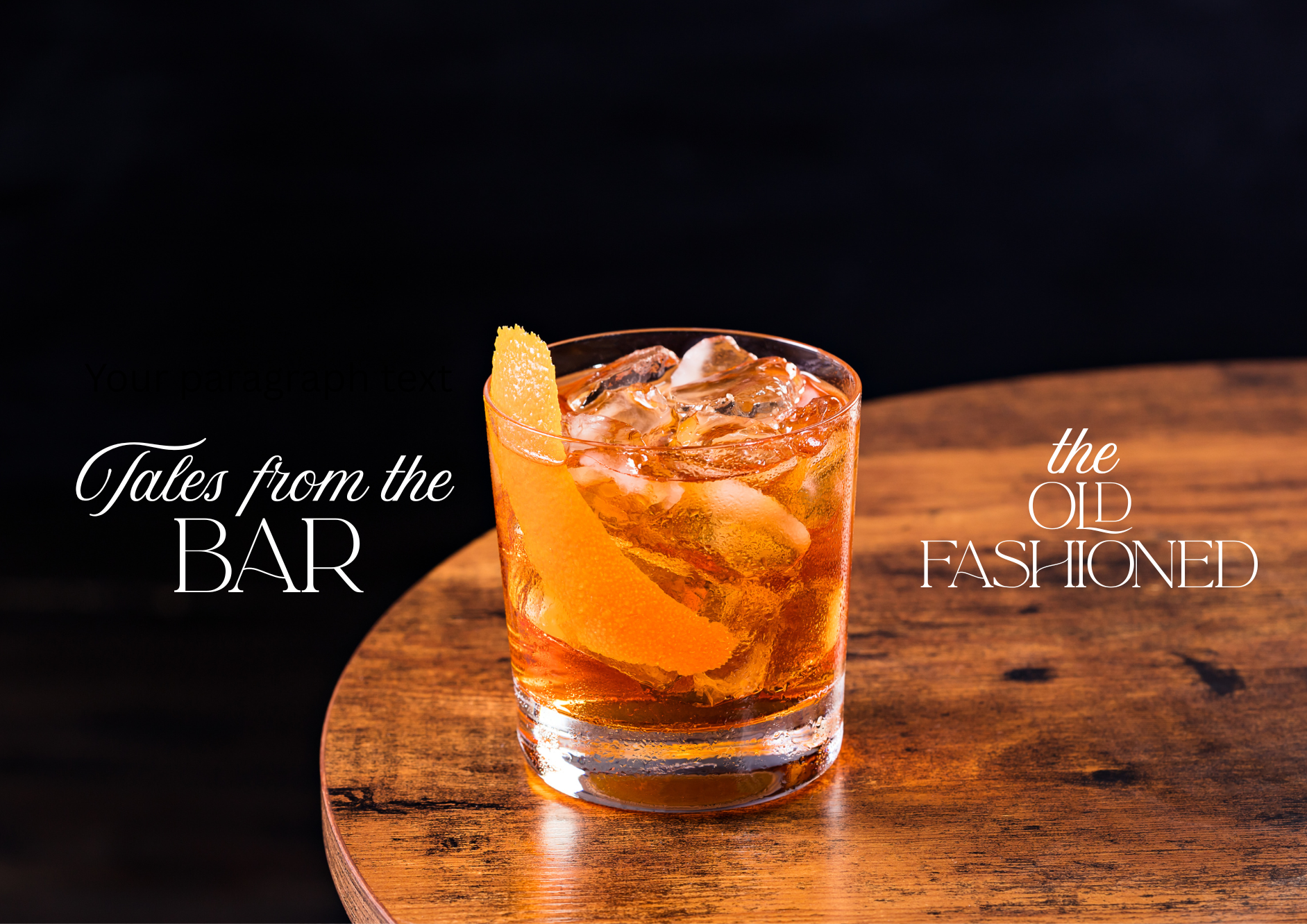The Old Fashioned
Slow is Sacred
Note: This post reflects on a cocktail, but really it’s about ritual and grace. If alcohol isn’t for you, the altar can be tea, coffee, water, or
stillness just the same.
One slow afternoon, I remembered something I had read — a description of an Old Fashioned, elegant in its simplicity: bourbon, bitters, sugar, orange peel.
So, I made one.
Not to escape, but to pause. To breathe. To anchor myself in something steady. I didn’t know then that I was stepping into a kind of ritual — that the act of making this drink, slowly and with intention, would become a quiet practice for me. A way of creating a small altar in the middle of uncertainty.
Now — before we go any further, let’s talk about the name: Old Fashioned.
It sounds like something your granddad might order right after telling you how gas used to be 29 cents a gallon. Or like your aunt who still writes checks at the grocery store and thinks “LOL” means “lots of love.” But the drink itself? It’s aged beautifully. Simple, steady, and still showing up on menus everywhere. Turns out “old-fashioned” isn’t always an insult. Sometimes it just means tried-and-true.
Later, I learned that the Old Fashioned is considered one of the earliest cocktails, dating back to the early 1800s. Originally called a “whiskey cocktail,” it was just spirits, sugar, water, and bitters. Over time, as drinks got fancier and more complicated, some folks asked for it to be made “the old-fashioned way.” The name stuck. Simplicity became its signature.
There’s something almost liturgical about the process — not in the sense of organ music or stained glass, but in the steady rhythm of it all. The slow swirl of the spoon. The clink of ice settling into glass. The careful peel of citrus, not just for garnish, but as a kind of offering. It’s a ritual that invites you to slow down and pay attention. Like any good liturgy, it’s not meant to be rushed. You don’t chug an Old Fashioned. You honor it. You sit with it. You let it open you up — not for escape, but for reflection, maybe even reverence.
It’s no surprise that so many of us reach for rituals when we’re weary. Whether it’s lighting a candle, saying a prayer, walking the same wooded trail, or crafting the perfect cocktail, there’s comfort in repetition. A sacred rhythm in doing something the old way — not because it’s trendy, but because it tethers us to something older, deeper, steadier.
The Old Fashioned is often seen as a “dad drink,” a grandfather’s favorite, a retro relic. Maybe that’s part of its charm. It connects us to people we miss. To stories we’ve heard at the corner of a bar or the edge of a kitchen counter. It reminds us that presence matters. That slow is sacred.
In some strange way, the Old Fashioned mirrors the gospel.
Because the gospel, like the drink, is simple at its heart — just a few core ingredients: love, mercy, truth. Not flashy. Not complicated. But with power that sneaks up on you. It’s meant to be savored, not rushed. Received, not conquered. Shared, not hoarded.
And like any good ritual, grace is best experienced in community. Over stories. Laughter. Honest confessions. And maybe even a few regrets.
You can’t microwave an Old Fashioned. And you can’t fast-track grace. Both require a kind of patience that modern life resists. You have to show up. Measure things out. Pay attention. Trust the process. Maybe even believe that slowing down isn’t laziness, but holiness.
I’ve come to believe that even small rituals — especially in the moments when no one else is around — can hold us together.
So here’s to the Old-Fashioned.
And to all the unlikely altars we find in things stirred slowly, tasted deeply, and shared freely.
May your glass be full — not just of bourbon and bitters, but of memory, meaning, mercy, and maybe a maraschino cherry if that’s how you roll.
And may you always find God — not just in stained glass or scripture, but in the hush of an evening, the rhythm of a sacred habit, and the grace that still finds us, even when the lights are on and the streets are flooded.
A Note of Care:
If you’re in recovery, please know this post is never meant to romanticize alcohol or overlook its very real dangers. The sacred can be found in tea, water, coffee, or stillness just as surely as in a cocktail glass. If drinking brings harm rather than healing — to you or to those you love — may you feel zero shame and full freedom to find your altar elsewhere. What matters isn’t what’s in the glass, but what opens your heart.
Recipe: The Old Fashioned
1 sugar cube (or ½ tsp dark sugar)
Splash of soda water
2–3 dashes Angostura bitters
2 dashes orange bitters
2 oz rye or bourbon (I like James E. Pepper 116 proof rye for backbone)
Garnish: Amarena cherry (never maraschino) and/or orange peel
Method:
Muddle the sugar cube with bitters and a splash of soda water in a rocks glass until it dissolves. Add whiskey and ice. Stir slowly until chilled. Garnish with an orange peel twist or, if you must, an Amarena cherry. Sip. Savor. Do not rush.

There’s something both hopeful and haunting about unfinished work. A story that ran out of words. A prayer that’s still waiting on an answer. A dream that stalled halfway between vision and reality. We all have a few of those, don’t we? Places in our lives that feel like construction zones — full of sawdust and scaffolding, promises we meant to keep, and prayers that haven’t yet found an answer. That’s the space where Paul writes his letter to the Philippians — from a Roman prison, talking about a good work that God had started and would somehow finish. “I am confident of this,” he writes, “that the One who began a good work in you will carry it on to completion until the day of Jesus Christ.” If anyone had reason to question that promise, it was Paul. He was chained to a guard, his freedom gone, his ministry on pause. Yet his words breathe confidence, not despair. He looks at his friends in Philippi — people who had risked their safety to stand with him — and he sees evidence of God’s goodness still unfolding. He doesn’t say, “I hope you can finish what you started.” He says, “The One who began this work in you will finish it.” There’s a difference. One puts the weight on us; the other reminds us whose hands hold the hammer. Paul’s language echoes the creation story — the God who began the world with light, called it good, and didn’t stop until it was complete. That same creative rhythm, Paul says, is alive in us. The God who started something beautiful in you isn’t walking away halfway through. Even when you can’t see the plan, even when all you’ve got are pieces on the floor, God is still building something that will one day make sense. From the first sunrise in Genesis to the flicker of a lamp outside Paul’s cell, that has been the way God has always worked: Begin. Call It Good. Complete. Paul’s confidence wasn’t built on theory — it was built on relationship. The Philippians didn’t just send thoughts and prayers; they sent food, support, and friendship. They were what Paul called partners in the gospel — not in a business sense, but in the kind of companionship that costs something. They stood with him when others wouldn’t. And in their faithfulness, Paul saw proof that God’s good work wasn’t stuck just because he was. That’s often how grace works — through people who quietly show up, carrying a little hope when ours has run dry. If you’ve ever looked at your life and thought, “This isn’t what I imagined,” you’re in good company. Paul’s letter reminds us that unfinished doesn’t mean abandoned. Sometimes God’s work looks less like building and more like waiting. Less like progress and more like perseverance. But make no mistake — even the waiting rooms can be altars. Because maybe the sacred work isn’t what we’re doing for God, but what God is still doing in us — shaping patience, humility, and trust. Maybe the Unlikely Altar this time isn’t a table or a church. Maybe it’s the half-built part of you — the one still covered in dust and duct tape — that God refuses to give up on. That's the Unlikely Altar. After all, the sacred shows up there too — right in the middle of the mess. A Roman prison doesn’t seem like the ideal spot for a letter about confidence and joy — but that’s where Paul wrote it. And maybe that’s the point. If grace can write from a prison cell, then it can certainly keep writing in us. The same hands that shaped light out of darkness are still working on you and on me, still carrying the good work forward — even on days when we can’t see it. So take heart. The work isn’t done yet. And that’s good news.

Paul starts his letter to the Philippians the way he starts almost every letter he ever wrote — with two simple words that sound like a benediction and a blessing all at once: “ Grace to you and peace from God our Father and the Lord Jesus Christ. ” Grace and peace. It’s easy to glide right past them. After all, Paul says it so often it can sound like his version of, “ Dear friends, hope you’re doing well. ” But those words are anything but filler. They’re the opening line of a letter written from prison — a man in chains sending light through a keyhole. That’s the thing about grace and peace. They don’t wait for better conditions. When Paul writes, he doesn’t start with complaints about the guards or the food or how cold the nights are. He doesn’t list his injuries or beg for sympathy. Instead, he offers what he himself most needs: grace and peace. I’ve come to believe that the words we offer the world when we’re hurting reveal what’s deepest in us. For Paul, it was this stubborn conviction that God was still at work, even in confinement — that grace still flowed and peace was still possible. Grace and Peace Paul begins with two words that still have the power to stop me in my tracks: grace and peace. He could’ve opened with something more ordinary — Dear friends , or Hang in there . But instead, from a cell that smelled of iron and damp stone, he chooses a blessing. He leads with joy. Grace — that wild, unearned love that shows up even when we’ve done nothing to deserve it. Grace is the quiet voice that says, “ You’re still min e.” It’s the kind of love that doesn’t wait for you to get your act together. It just walks right into your mess and sits down beside you. And peace — not the fragile kind that depends on calm seas or perfect days, but the kind that holds steady when the waves are high. The kind that whispers, “ You’re okay, even here .” I love that Paul links the two together, because grace without peace feels unfinished, and peace without grace feels forced. Together they form a rhythm — grace that reaches, peace that remains . And maybe that’s what Paul was really offering: a new way to begin. Can you imagine if those were the first words we spoke to each other every morning? Joy to you. Peace to you. Every kind of good to you. How different a day might feel if it started there — not with headlines or hurry, but with blessing. Maybe that’s the secret of Paul’s letter: that even in a place built to break him, he still believed goodness could find a way through the cracks. So what would it look like to practice this? Maybe it starts small — whispering “grace and peace” toward the people you don’t even like. Or toward yourself when that inner critic starts its sermon again. So what would it look like to practice this? Maybe it’s learning to pause, breathe peace, and offer grace instead. When gossip starts — grace and peace . When the argument heats — grace and peace. When you replay the hurt that still stings — grace and peace . Interrupt the old patterns with blessing. The early church actually practiced this. In Acts 14 and 20, believers would commend one another to God’s grace before sending them out. They’d gather, pray, lay on hands, and say, “You are given over to God’s grace and peace.” What if we did that? What if we treated every conversation, every cup of coffee, every parting at the door as a small commissioning — giving one another over to grace and peace before we go back into the world? A Roman prison doesn’t sound like much of a sanctuary, but Paul found one there. Maybe that’s the invitation — to find our own Unlikely Altars , the places where grace still surprises us and peace somehow holds. If I’m honest, I’m preaching to myself here. I could use a little grace and peace most mornings before the second Mountain Dew. So wherever you are today — in traffic, in grief, in the middle of a week that feels like too much — hear this old, stubborn greeting again: Grace and peace to you. Not someday. Not when you’ve earned it. Right now .

Some of the best letters ever written came from prison. Not cozy writer’s retreats, not beach houses, not corner offices with ocean views. Prisons. Paul’s letters from Rome. Bonhoeffer’s from Tegel. Martin Luther King Jr.’s from Birmingham. Each penned behind locked doors, on borrowed paper, with hope that somehow the words might slip past the guards and make it into the world. And they did. What fascinates me is not just what they wrote, but where they wrote it from. It’s one thing to talk about faith or freedom or joy when you’re standing on a stage. It’s another when your only audience is a damp wall and a single beam of light. Paul starts his letter to the Philippians with the same two words he used so often: grace and peace. Not resentment. Not a plea for bail. Grace and peace. As if he’s saying, “Yes, I’m chained up—but I’m free where it counts.” That’s what hooked me. Because I’ve learned that “prison” doesn’t always have bars. Sometimes it looks like grief. Or waiting rooms. Or a quiet house after someone’s gone. Sometimes it’s a job that’s lost its meaning, or a season when God seems to have stepped out for coffee and hasn’t come back yet. We’ve all got our versions. And maybe—just maybe—the letters we write ( or live ) from those places are the ones that matter most. The ones we didn’t plan on writing. The ones that bleed a little truth and hum with hope in spite of it all. When Bonhoeffer wrote from his cell, he wasn’t trying to be profound—he was trying to stay human. He wrote about missing his fiancée, about books he wished he had, about the longing to see the sky. And in between the lines of the ordinary came the sacred: “ Only the suffering God can help .” When Dr. King wrote from Birmingham Jail, he wasn’t crafting a masterpiece—he was answering a letter from fellow pastors who told him to wait. “ Injustice anywhere is a threat to justice everywhere, ” he replied, with chains on his wrists and conviction in his voice. And Paul—well, he wrote to say thank you. To encourage. To remind a fledgling community that joy doesn’t depend on circumstances. He wrote about grace, love, partnership, deliverance, and struggle—words that still breathe life into our own small confinements. Maybe the best letters come from prison because that’s where honesty and hope have to share the same cell. And maybe that’s what makes it an Unlikely Altar . A place where faith is stripped to its bones, where prayers sound less like poetry and more like breathing, and where grace shows up in the least graceful places imaginable. Over the next few posts, I want to walk through Philippians chapter one—slowly. Not to decode it, but to dwell in it. To listen for the heartbeat behind the bars. We’ll start where Paul starts: with grace and peace . Then move into gratitude for the good work God’s still doing ( even when it feels like He’s on break ). We’ll talk about what it means to hold people in your heart, to let love abound, to trust in deliverance, and to find solidarity in struggle. You don’t have to be in prison to get it. You just have to know what it’s like to feel stuck—to long for something freer, deeper, truer. This series isn’t about how to escape. It’s about what you can discover when you can’t. Because maybe the sacred still writes letters from the places we’d rather forget. And maybe the God who showed up in Paul’s cell still shows up in ours—reminding us that grace can grow in concrete cracks, and peace can find a way through iron bars. Grace and peace! Let’s open this letter together.

